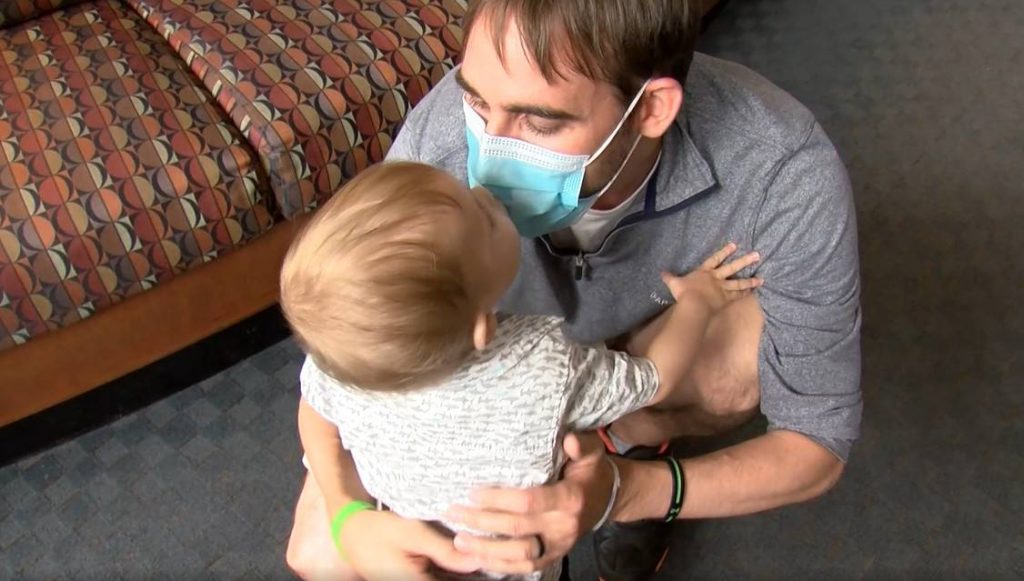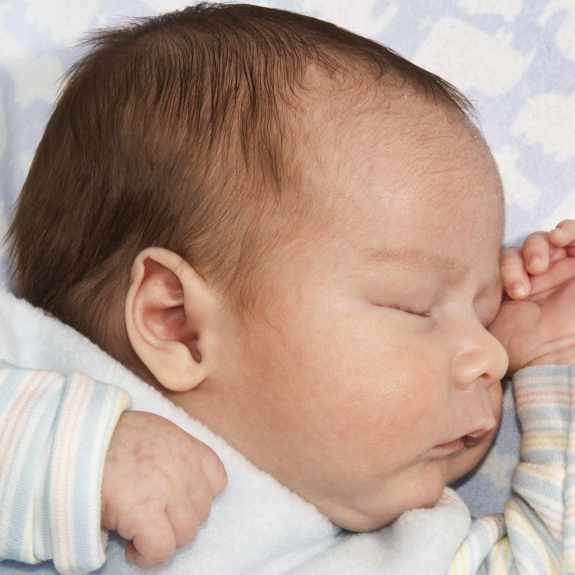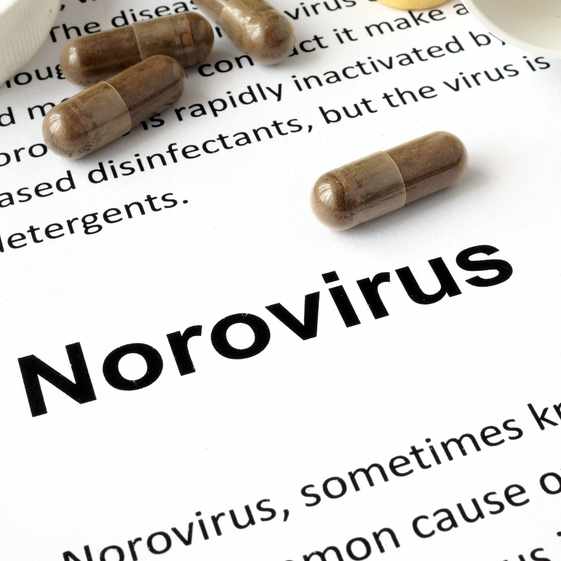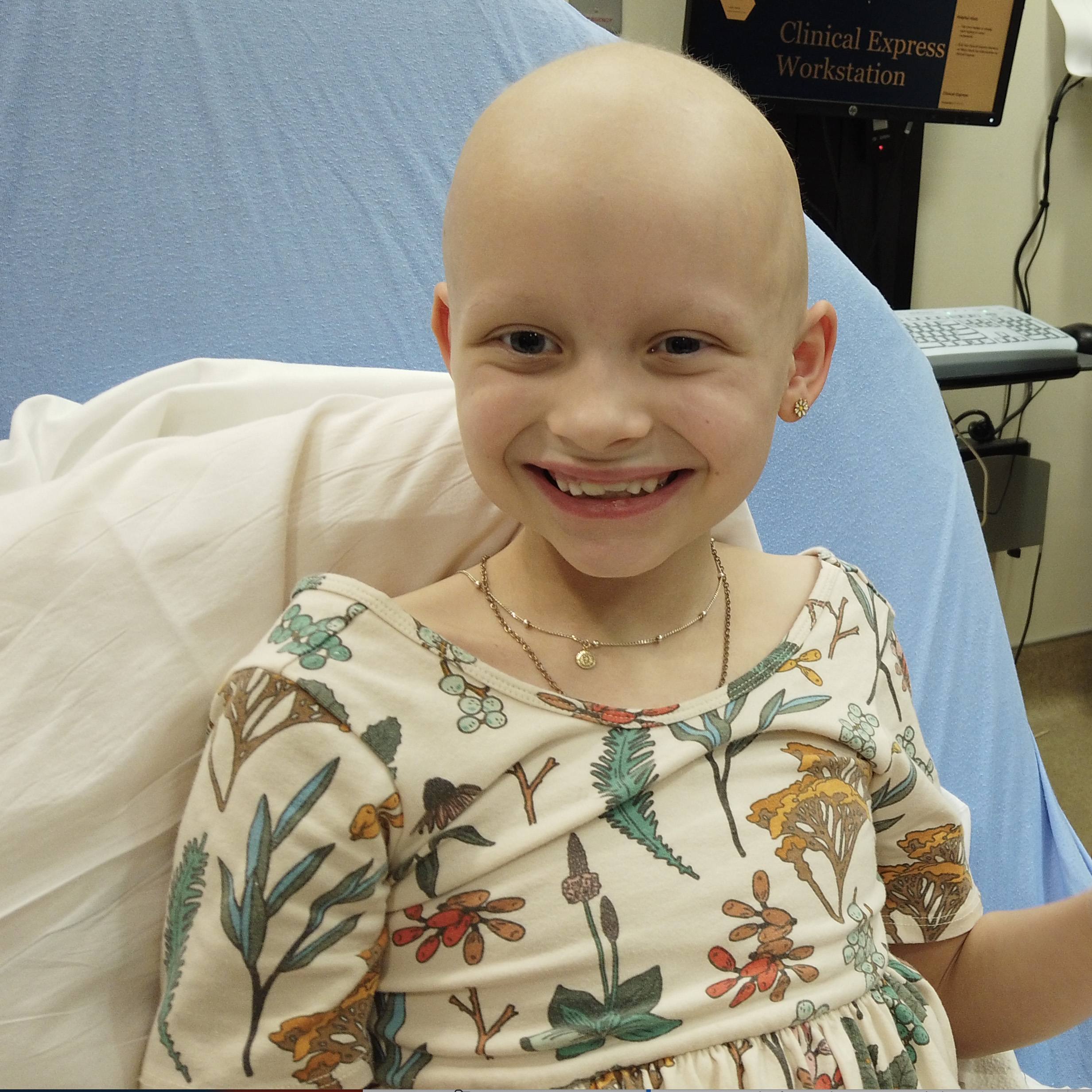
Father's Day will be extra-special this year for the Teeples family in La Crosse, Wisconsin. After spending much of his two years in a hospital bed with a rare kidney disease, toddler Easton Teeples has returned home from Mayo Clinic after a lifesaving transplant from dear old dad.
Watch: A father's gift to his son.
Journalists: Broadcast-quality video (3:40) is in the downloads at the end of this post. Please courtesy: "Mayo Clinic News Network." Read the script.
It's a special bond between father and son. For Steve Teeples and his first child, Easton, it's extraordinary.
Easton was diagnosed as a newborn with congenital nephrotic syndrome, a rare, genetic kidney disease.
"They told us upfront, transplant is going to happen at some point. We just didn't know when or how we were going to get to that," says Steve.
By the time Easton was 1, doctors at Mayo Clinic told Steve and his wife, Marcie Teeples, that Easton was big enough to receive a new kidney. And dad would be the donor.
"I remember the day I got the call," says Steve. "I was pretty excited. I'm sorry if I get emotional, but they said, 'You're a match.'"
The first hurdle was transplanting an adult-sized kidney into a young child's body.
"I mean, if you look at Easton's little tummy, how can that fit in there?" asks Steve.
Dr. Mikel Prieto is surgical director of the pediatric kidney transplant program at Mayo Clinic, and he would perform the transplant.
"It's part of the challenge. And sometimes the kidney essentially takes up about half of the space in the belly," says Dr. Prieto. "Putting a large adult kidney in a small child is like putting a Ferrari engine into a small car. It really has a fantastic function. It's really the best option for these small kids to get a healthy, large adult kidney."
But the biggest challenge of them all would be how to connect Steve's kidney to Easton's small veins. And because of the damage from his disease, Easton's main blood source to the kidney ― the vena cava ― had essentially disappeared.
"There was only one small part of the cava that was open because the main cava is missing. It's all clotted off. So the only option was to remove Easton's kidney, and to connect the new one right in that spot," says Dr. Prieto.
It would be a first for Dr. Prieto and Mayo's transplant team.
"I mean, the option was to say, 'Sorry, we can't do this because this is too difficult.' Or, 'Let's try the only option that we have, which is to go way up there in a very difficult spot and connect the kidney,'" says Dr. Prieto.
It was a waiting game as the transplant team performed surgery on Easton first to determine if Dr. Prieto could make the transplant work.
"I made the final decision to say: 'OK, this vein looks good enough. I think we can connect a new kidney to this spot. So let's go for it,'" says Dr. Prieto.
"And I was laying in the bed, and 45 minutes or a half-hour rolled around, and in come the doctors and nurses. And they said, 'Well, are you ready to go?' And then, you know, celebration, flood of emotions. I started crying," says Steve.
"And we were able to put it perfectly well just in the same spot as his own kidney used to be," says Dr. Prieto. "Despite this huge surgery for a little boy like this, he had a very nice recovery and you can see a few weeks later how happy he is and how well he's doing — a big change for his life."
A little more than a month after transplant surgery and now past his second birthday, Easton is a ball of energy and a chip off the old block.
"He's got a part of me in him," says Steve. "He's my hero. He's a warrior. And I don't know what parent wouldn't want to do something like that for their own kid. It takes everybody. It's a team effort. And the least I could do to help him and give him a better life is give up my kidney for him. I'm happy and I'm proud to do it."
____________________________________________
For the safety of its patients, staff and visitors, Mayo Clinic has strict masking policies in place. Anyone shown without a mask was either recorded prior to COVID-19 or recorded in a nonpatient care area or where social distancing and other safety protocols were followed.
Related Articles







